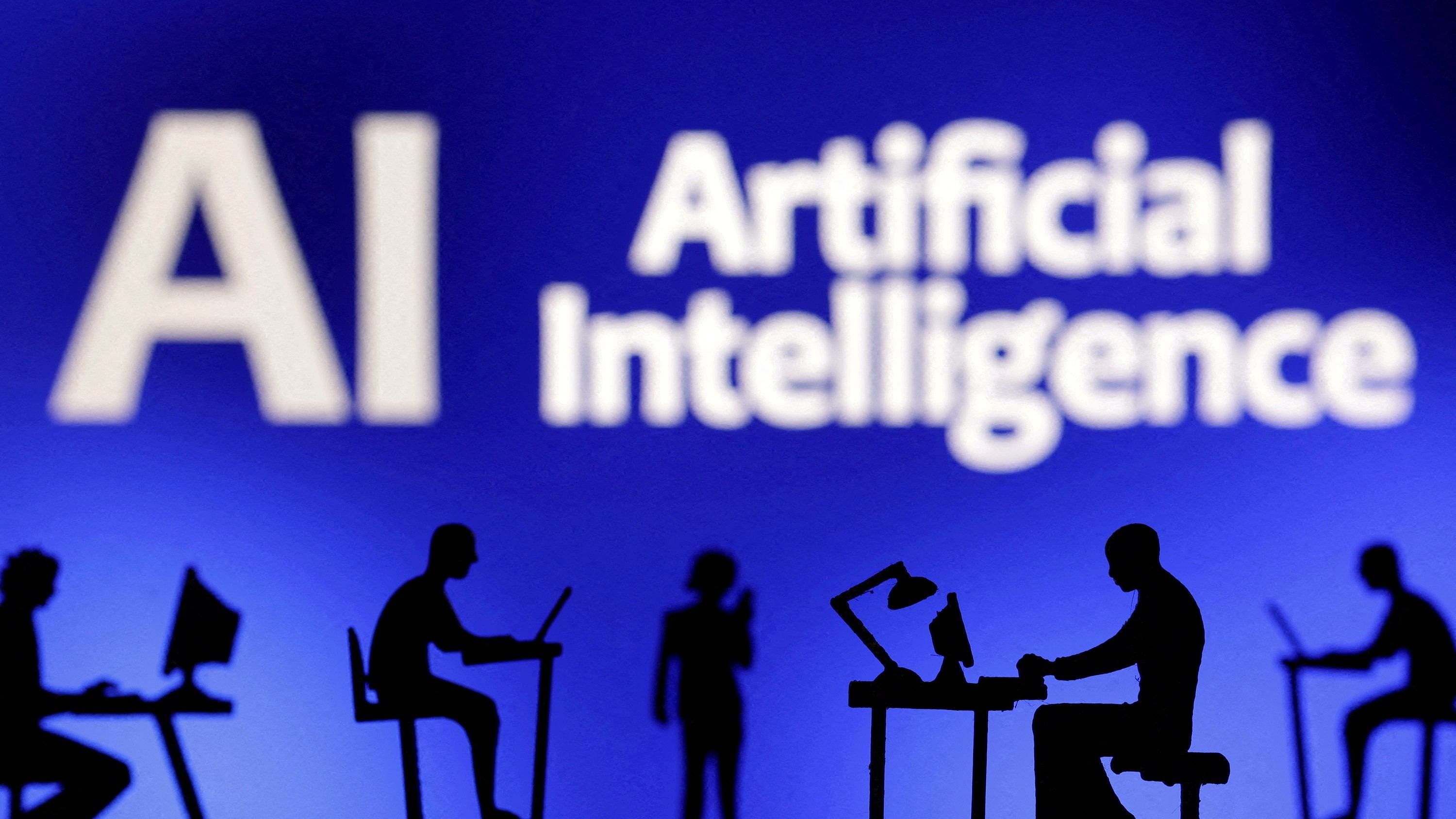
Figurines with computers and smartphones are seen in front of the words 'Artificial Intelligence AI' in this illustration.
Credit: Reuters Photo
Artificial intelligence is the topic of the moment, with an uncontrolled growth in innovation fuelling the belief that AI will not only solve problems but also become the ‘supreme artist’ of the future. Many startup founders talk about AI tools ‘inspiring’ or ‘helping’ creators by germinating new ideas through algorithms. Many of them overlook the fact that the authenticity of an idea is the fruit of labour, which comes from countless hours of writer’s or musician’s block and multiple failures. As we make sense of and re-configure what troubles us, we step outside comfort and understand our creative processes.
The buzzword used by AI startup founders is ‘inspire,’ which is another safe word for ‘my tool will do the job for you easily. Sit back and relax’. AI seeping into creativity workflows is leading to a lethargic lifestyle filled with content but devoid of flavour, cultural relevance, and experiential wisdom. Inspiration cannot be generated by an algorithm. Dissociation from AI is necessary for us to deeply personalise our artistic endeavours. Frustration is a part of every creative journey, and bypassing it with tools that imitate or give quick results is not the solution.
Unlocking devices through facial detection and fingerprints relieved us of the ‘hard work’ of memorising patterns or numbers. We are moving to a world where people feed ChatGPT with inputs to make one-liners more pleasing, emails more polite, or even write entire scripts that are catered to a particular demographic. Blockchain technology introduced non-fungible tokens (NFTs), and artists worldwide jumped into a virtual world of auctions where bitcoins floated between accounts and the human interaction with tangible art came to a standstill. We also saw the rise of AI being used to make generative art, visual art, and music. Using machine learning, a code can be fed with enough data for it to recreate a classic Renaissance painting like the Mona Lisa within a few seconds. The seepage of this information-based science into the world of art raises a lot of questions as to the authenticity of an art object.
An evolution of the perception of an art object in the world also means a forced adoption of new methods by traditional artists. When a machine makes art, why does the human audience accept it as an original work of art? Is an art object a systematic yet clever assimilation of mere information? A lot of generative AI art is all about tuning an algorithm to deliver a final output after learning from a myriad of previous brush strokes to achieve a human-like form where some strokes need to be misdirected. Mistakes make us human and inform our intuitive powers. Many sketch artists begin with a few strokes on the page, and the misdirected strokes often guide the mind of the artist to transcend into a warmed-up work of art that evolves over time. A mature human hand can translate the mind’s intuition within a few seconds if the practice is sustained for a long period of time. The irregularities and human touch of experienced risk usher in something magical in the final sketch. There is a valuable learning taking place between the ideation and final render of the sketch since the process of rendering is bound by a realm of calculated decisions of the human mind. These decisions are purely coming from each person’s experience, emotional or situational, which becomes an artist’s signature. The flexibility and peculiarity of these creative decisions keep changing over time, and the strokes start to reveal the artist’s experiences and the tiniest bubbles of his/her temperament. This creates an opportunity for an interaction with the human world, or ‘the work of art comes alive’. When it comes to artificial intelligence creating art, we seldom get to feel the machine’s previous experiences, its nature, or its intuitive capacities. The doors of interaction remain closed.
If AI dominates in making art, then we would only be surrounded by derivatives, overshadowing the need to sacrifice time to evolve one’s own distinct creative process.
Derivatives will always have sediments of previous creations, leading to a loss of original ideas or the depletion of ‘eureka’ moments in the process of creating. Filmmaker Orson Welles calls for the need to have ‘virgin eyes’ before making a film. Being confident and brave to ferment original ideas is the need of the hour in our artistic process. This requires putting in lots of time. Being influenced and being programmed to borrow from are two completely different islands of thought. To interact with and make good art, we need to revive a culture of striving for originality through a wilful sacrifice of time and sustained dedication.
(The writer is a Bengaluru- based author and musician)